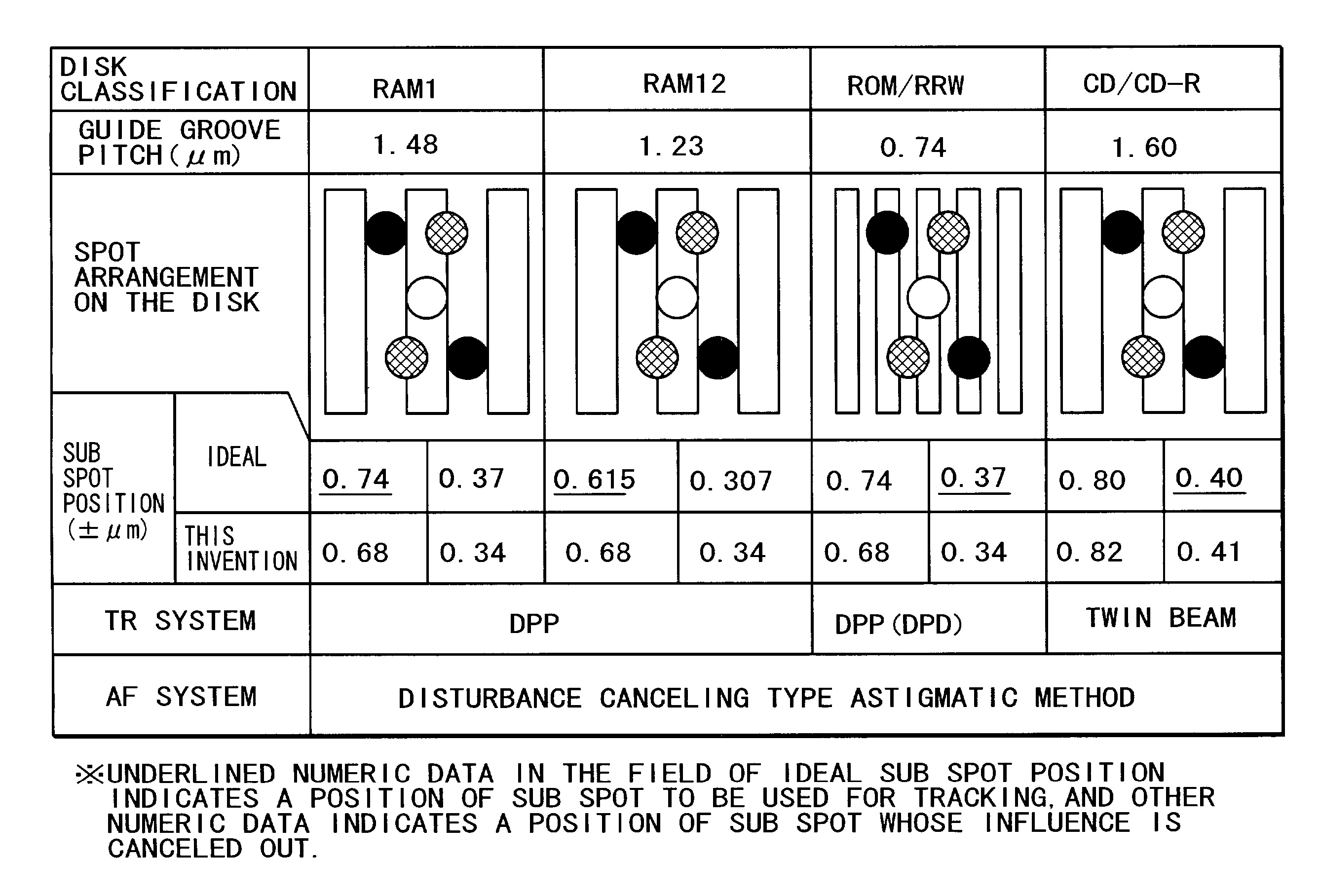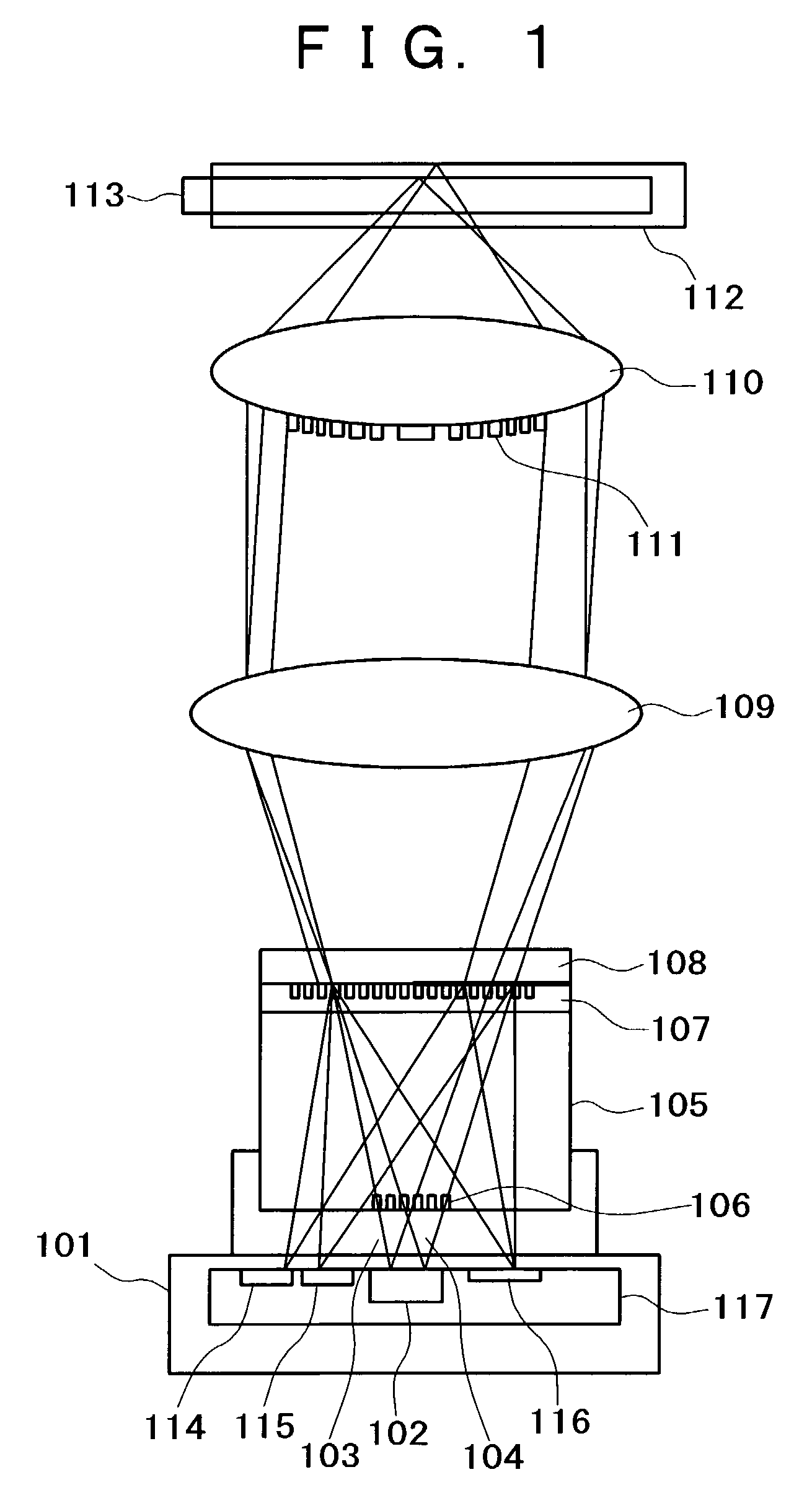Optical reproducing apparatus
a technology of optical disk and reproducing apparatus, which is applied in the direction of digital signal error detection/correction, instruments, recording signal processing, etc., can solve the problems of false tracking error signal, imbalance of reflected light intensity distribution, and confusion among common users
- Summary
- Abstract
- Description
- Claims
- Application Information
AI Technical Summary
Benefits of technology
Problems solved by technology
Method used
Image
Examples
Embodiment Construction
[0070]Hereafter, embodiments according to the present invention will be described referring to the figures.
[0071]FIG. 1 shows a fundamental embodiment of the optical reproducing apparatus according to the present invention. In a two-wavelength hologram laser module 101, infrared-laser light 103 and red laser light 104 are emitted from a two-wavelength semiconductor laser 102. In practice, although it is not necessary to emit these beams of light simultaneously and only one of tem that is necessary needs to be emitted, here the both beams of light are shown for the convenience of illustration. Each light enters a complex diffraction grating 106 formed on the diffraction grating substrate 105 and is divided into five beams, not shown in the figure, at each wavelength. Next, these beams of emitted light pass through the polarization-dependent diffraction grating 107, and are emitted from the two-wavelength hologram laser module 101 via a quarter-wave plate 108. At this time, the polari...
PUM
| Property | Measurement | Unit |
|---|---|---|
| wavelengths | aaaaa | aaaaa |
| current size | aaaaa | aaaaa |
| size | aaaaa | aaaaa |
Abstract
Description
Claims
Application Information
 Login to View More
Login to View More - R&D
- Intellectual Property
- Life Sciences
- Materials
- Tech Scout
- Unparalleled Data Quality
- Higher Quality Content
- 60% Fewer Hallucinations
Browse by: Latest US Patents, China's latest patents, Technical Efficacy Thesaurus, Application Domain, Technology Topic, Popular Technical Reports.
© 2025 PatSnap. All rights reserved.Legal|Privacy policy|Modern Slavery Act Transparency Statement|Sitemap|About US| Contact US: help@patsnap.com



